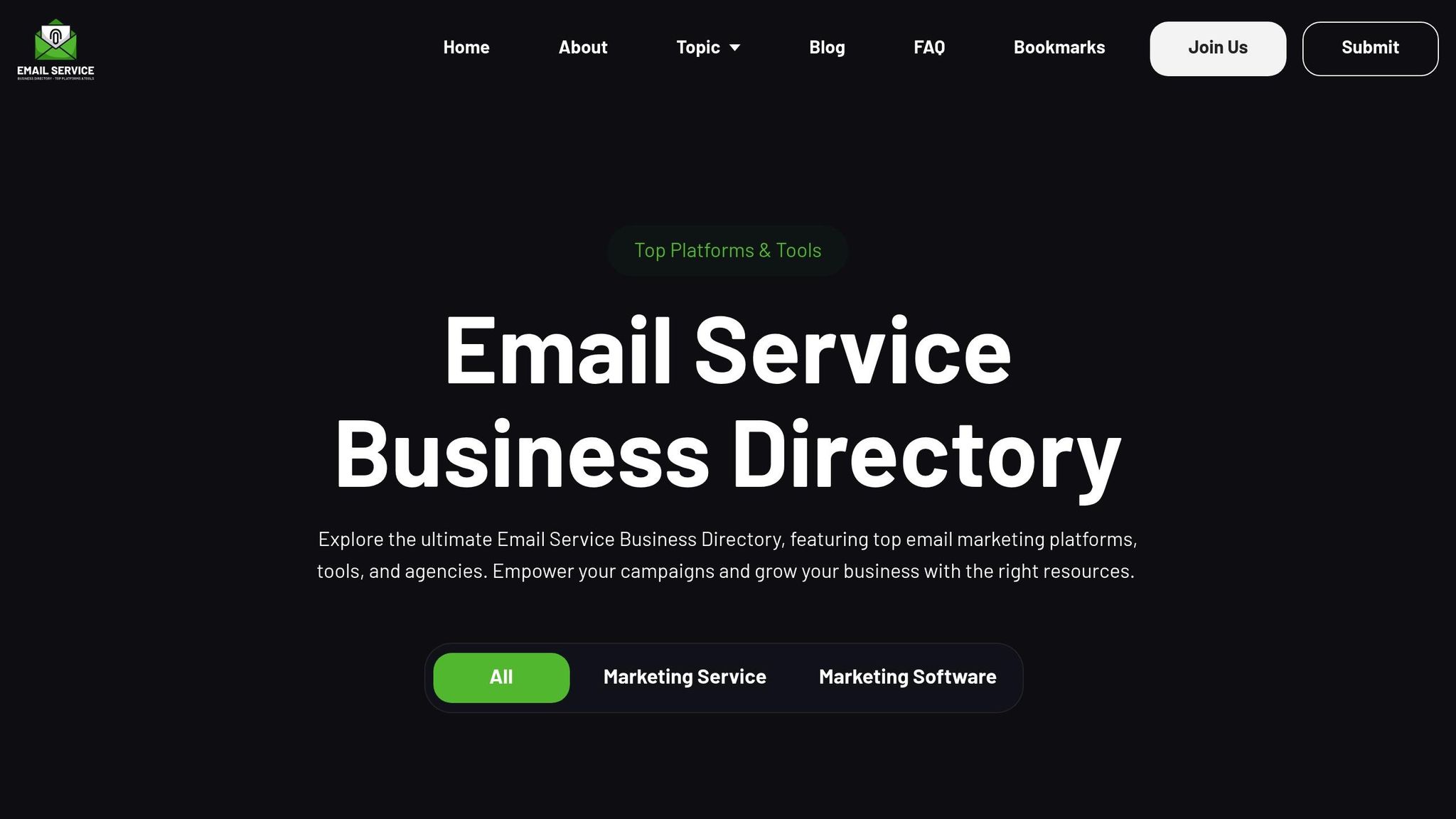AI-driven customer journeys are reshaping how businesses interact with customers, offering tailored experiences based on individual behaviors and preferences. But to succeed with these systems, you need to measure their performance effectively. Here's what you need to know:
- AI-driven journeys: Unlike traditional sales funnels, these journeys use real-time data and machine learning to create personalized paths for each customer.
- Key metrics: Measure success using both standard metrics like conversion rates and churn, and AI-specific metrics like intent prediction accuracy and journey completion rates.
- Data infrastructure: A strong data foundation is critical. Focus on real-time data ingestion, cross-channel integration, and maintaining high data quality.
- Performance measurement: Balance business metrics (e.g., revenue per customer) with technical metrics (e.g., model accuracy and latency) to get a full picture of AI's impact.
- Advanced analytics: Use metrics like behavioral trigger effectiveness and bottleneck identification to refine personalization and optimize customer journeys.
AI for CX: Customer Journey Analytics
Core Performance Metrics for AI-Driven Journeys
Measuring the success of AI-driven customer journeys requires a blend of traditional metrics and AI-specific insights. Together, these metrics provide a comprehensive understanding of customer behavior and system performance. Below, we explore both standard and AI-specific metrics, as well as their impact on business and technical outcomes.
Standard Customer Journey Metrics
Traditional metrics remain essential, even in AI-powered systems, as they provide benchmarks for evaluating customer relationships and overall performance.
- Conversion rate: This metric is indispensable. In AI-driven journeys, tracking micro-conversions - like email opens, website visits, or cart additions - offers actionable insights that AI systems can use to refine future interactions.
- Customer lifetime value (CLV) and retention rate: AI enhances these metrics by predicting and influencing long-term customer behavior. Refined retention metrics provide a detailed look at engagement patterns, helping businesses identify which personalized experiences resonate most with customers.
- Churn rate: AI systems excel at predicting churn by identifying early warning signs, such as reduced engagement or changes in behavior. This allows businesses to take proactive measures to retain customers, unlike traditional, reactive approaches.
- Average order value (AOV): With personalized recommendations and dynamic pricing strategies, AI can increase the value of individual transactions, offering a more tailored shopping experience compared to static methods.
AI adds value to these metrics by offering real-time insights and opportunities for improvement, making customer interactions more dynamic and effective.
AI-Specific Journey Metrics
AI-powered systems introduce new metrics that are tailored to measure the performance of AI initiatives and uncover areas for refinement. These metrics complement traditional ones, advancing measurement techniques.
- Intent prediction accuracy: This measures how well an AI system anticipates a customer’s next move. High accuracy results in more relevant experiences and better resource allocation. Businesses track this by comparing predictions with actual customer actions over time.
- Real-time personalization lift: This evaluates the performance boost achieved through personalized content versus generic messaging. Improvements in engagement and conversions highlight the effectiveness of tailored experiences.
- Micro-moment engagement: This focuses on how customers respond to brief, AI-driven interactions, such as dynamic content or personalized emails. Tracking these interactions reveals the value of timely, relevant touchpoints.
- Journey completion rate: This metric measures how effectively customers navigate personalized paths created by AI. A higher completion rate indicates successful personalization that aligns with customer needs.
- Cross-channel consistency score: This assesses how seamlessly AI systems deliver experiences across multiple touchpoints. A consistent experience builds trust, while disjointed interactions can harm engagement and conversions.
- Adaptive learning velocity: This measures how quickly an AI system improves by incorporating new data. Faster learning enables better predictions and personalization, enhancing the overall customer experience.
Business Impact vs. Technical Metrics
To fully understand performance, businesses must balance metrics that reflect customer and revenue outcomes with those that assess the technical capabilities of AI systems.
- Business impact metrics: These focus on outcomes like revenue per customer, customer acquisition cost, net promoter score, and market share growth. For example, advanced revenue attribution models can better capture the impact of AI-driven touchpoints compared to traditional last-click methods, offering a clearer picture of AI’s contribution to business growth.
- Technical metrics: These assess the AI system itself, including model accuracy, prediction confidence, system latency, and data quality. For instance, recommendation engines are evaluated based on precision and recall, while predictive models focus on forecasting accuracy.
System latency is particularly important for real-time personalization, as customers expect responses almost instantly. Additionally, data quality - encompassing completeness, accuracy, and timeliness - plays a critical role in ensuring AI systems perform optimally.
Many organizations use integrated dashboards to present both business and technical metrics side by side. This approach helps stakeholders see the full picture of AI performance and align optimization efforts with broader business goals.
Setting Up Data Infrastructure for Performance Measurement
To effectively measure the performance of AI-driven customer journeys, having a solid data infrastructure in place is non-negotiable. Without proper systems for collecting, storing, and processing data, even the most advanced AI models will fall short of delivering actionable insights. Your infrastructure directly impacts your ability to track key metrics and make informed decisions about customer interactions. In this section, we’ll explore how to establish a strong foundation for measurement.
Data Requirements for AI Journey Analytics
A well-designed data infrastructure begins with unified data pipelines. These pipelines gather information from every customer touchpoint - whether it’s your website, mobile app, email campaigns, social media platforms, or even offline interactions.
For AI systems to function effectively, real-time data ingestion is critical. This means setting up streaming platforms capable of handling high volumes of data without delays or bottlenecks, ensuring you capture customer behavior as it happens.
One of the biggest hurdles is cross-channel data integration. Different platforms - like email marketing tools, e-commerce systems, and customer service software - store data in varying formats. To create a unified customer view, normalize this data and build comprehensive profiles that your AI models can leverage.
Maintaining data quality controls is another essential step. Poor-quality data can lead to inaccurate predictions and underperforming AI models. Automated validation rules should be in place to ensure data is complete, accurate, and consistent at every stage.
Lastly, don’t underestimate the importance of historical data storage. AI models often perform better with access to extensive historical data. Aim to store 12–24 months of detailed customer interaction data, but be mindful of storage costs and plan accordingly.
Creating a Measurement Framework
Before diving into data collection and analysis, start by defining clear, business-aligned objectives for your AI initiatives. These goals will help you focus on the metrics that matter most.
Begin with baseline measurements using your current systems. These baselines - such as conversion rates, customer satisfaction scores, or operational efficiency - serve as benchmarks to evaluate the impact of AI-driven improvements.
When designing your data architecture, think both short-term and long-term. Your system should handle growing data volumes and new sources without requiring constant overhauls. Cloud-based solutions can be particularly useful for scaling as your needs evolve.
Implementing data governance policies is crucial for consistency. Document how metrics are calculated, where data comes from, and how often it’s updated. This ensures everyone on your team interprets the data the same way, avoiding confusion.
To streamline decision-making, build automated reporting systems. Dashboards and alerts can deliver real-time insights, helping teams respond quickly to performance changes and identify optimization opportunities.
Finally, establish feedback loops between your measurement systems and AI models. Use the insights you gather to refine your models and improve customer journeys. This creates a cycle of continuous improvement that drives better outcomes over time.
Batch Processing vs. Real-Time Analytics
Choosing between batch processing and real-time analytics depends on your specific measurement needs and budget. Here’s a quick comparison of the two approaches:
| Aspect | Batch Processing | Real-Time Analytics |
|---|---|---|
| Processing Speed | Hours to days for full analysis | Milliseconds to seconds for instant insights |
| Cost | Lower due to scheduled processing | Higher due to continuous resource demands |
| Data Accuracy | High, with thorough validation | May include incomplete data during processing |
| Use Cases | Historical analysis, compliance reporting | Personalization, fraud detection, instant responses |
| Complexity | Easier to implement and manage | Requires advanced streaming infrastructure |
| Resource Usage | Predictable and scheduled | Continuous and dynamic |
| Error Handling | Easier to retry and correct | More complex recovery mechanisms |
Batch processing is ideal for scenarios where immediate action isn’t required, such as monthly performance reviews, customer segmentation, or AI model retraining. Its ability to process complete datasets with thorough validation makes it a reliable choice for in-depth analysis.
On the other hand, real-time analytics is essential for customer-facing applications that demand immediate action. Dynamic pricing, personalized recommendations, and fraud detection are some examples where real-time capabilities shine. While this approach can be more costly and complex, the benefits often justify the investment in terms of improved customer experiences and outcomes.
Many organizations find that a hybrid approach offers the best of both worlds. Real-time analytics can handle immediate decisions, while batch processing supports deeper analysis and long-term planning. This balance allows businesses to enhance customer interactions while keeping infrastructure costs in check.
Ultimately, your choice should align with your measurement goals and available resources. Starting with batch processing and gradually incorporating real-time capabilities is a practical way to scale your operations while ensuring both immediate and long-term needs are met. This approach ensures that your AI systems deliver meaningful results while staying flexible for future growth.
sbb-itb-6e7333f
Advanced Metrics for Personalization and Optimization
With a solid data infrastructure in place, advanced metrics go beyond standard performance indicators to fine-tune personalization and streamline customer journeys. These advanced measurements assess how effectively AI systems tailor experiences and optimize interactions in real time, capturing subtle details that can significantly impact customer satisfaction. By building on foundational data and traditional KPIs, these metrics unlock deeper insights into customer behavior.
Personalization Performance Metrics
Behavioral trigger effectiveness evaluates how well your AI system identifies and responds to specific customer actions. This metric tracks the percentage of triggers that lead to meaningful engagement rather than causing friction or being ignored. For instance, in email marketing, you might measure opens, clicks, and conversions within a set timeframe. On a website, this could involve tracking how users interact with recommended content or navigate through product categories.
Predictive content deployment success gauges how accurately AI predicts customer interests. Key factors include content relevance, engagement duration, and conversion rates. By comparing the performance of AI-recommended content with other strategies across various stages of the customer lifecycle, you can identify strong points and areas needing improvement.
Micro-moment tracking focuses on brief but telling interactions during the customer journey. This might include a slight hesitation before clicking a button or lingering on a specific piece of content. Unlike general real-time analytics, this metric hones in on predictive behavioral cues, offering a deeper understanding of customer intent.
Journey Optimization Metrics
Optimizing the customer journey requires its own specialized metrics, which go beyond personalization to evaluate the overall experience.
Dynamic journey orchestration measures how effectively AI adapts customer pathways in real time. It tracks the adjustments made to individual journeys and their impact on outcomes. Striking the right balance is key - while personalization can improve the experience, too many changes might confuse users or reduce satisfaction.
Bottleneck identification uses AI to pinpoint where customers encounter obstacles or drop off. This involves monitoring stage duration and exit rates at critical touchpoints, while also considering factors like time of day, device type, and customer segment. Unlike traditional funnel analysis, this approach provides richer context, enabling faster interventions to resolve friction points.
Anomaly detection identifies unusual patterns that might signal issues with your AI system or highlight opportunities for improvement. By establishing baseline behaviors for different customer segments and journey types, your system can differentiate between meaningful anomalies and normal variations. A high rate of false positives could indicate the need for further model refinement.
Machine Learning Models and Metric Impact
As previously discussed, robust data and real-time analytics lay the groundwork for these advanced metrics. The choice of machine learning models plays a significant role in how these metrics perform.
- Supervised learning models rely on labeled data to predict specific outcomes, such as personalized content recommendations or churn risks. They tend to deliver consistent results but may require regular updates as customer behaviors shift.
- Reinforcement learning models adapt continuously based on customer feedback. While their initial performance might be modest, they improve over time by learning from interactions, eventually delivering highly personalized outcomes.
- Deep learning models excel at handling complex, multi-dimensional datasets, enabling highly sophisticated personalization. However, their computational intensity and lack of transparency can pose challenges when it comes to understanding their decision-making processes.
- Ensemble methods combine multiple models to capitalize on their individual strengths while mitigating weaknesses. This approach often results in more reliable performance across a variety of customer scenarios.
Using the Email Service Business Directory

AI metrics play a pivotal role in refining customer journeys, but the next step is finding a platform that turns these insights into action. The Email Service Business Directory is a curated tool designed to help businesses discover AI-powered email marketing solutions tailored to their specific needs. It acts as a bridge, connecting advanced AI data with actionable platform choices.
Finding AI-Powered Tools and Platforms
The directory simplifies the search for the right email marketing tools by organizing platforms based on their AI capabilities and technical strengths. Instead of getting bogged down by overwhelming feature lists or confusing pricing structures, it encourages businesses to focus on tools aligned with their goals. This approach ensures decision-makers evaluate whether a platform supports a broader strategy to improve and measure customer journeys effectively.
Comparing Platform Features and Solutions
To make the selection process even easier, the directory offers side-by-side comparisons of platforms. Businesses can evaluate key factors like how easily a tool integrates with existing systems, its usability, and its potential to grow alongside their needs. By focusing on these practical aspects - rather than just features or costs - the directory helps teams find solutions that truly align with their skills and objectives.
Choosing the Right Solution for Your Business
When picking an AI-powered platform, prioritize tools that integrate seamlessly with your measurement systems. Consider how easy it will be to adopt, the level of technical support offered, and whether the platform can scale as your business grows. A thoughtful evaluation ensures you choose a tool that not only meets current needs but also supports long-term customer engagement goals. The right choice can significantly enhance the AI-driven customer journey.
Conclusion: Improving Customer Journeys with AI
AI-driven customer journeys are transforming the way businesses engage with their audiences. By leveraging AI to measure, analyze, and refine these journeys, companies can unlock opportunities that once seemed out of reach. Success hinges on not just understanding AI's technical abilities but also implementing effective systems to track and evaluate performance.
With solid data collection and real-time analytics, businesses can respond instantly to shifts in customer behavior. Those who develop strong measurement frameworks can adapt swiftly to changing market dynamics, giving them a competitive edge.
Tracking key metrics like AI-powered personalization, engagement rates, conversion paths, and customer lifetime value creates a feedback loop for ongoing improvement. These insights help businesses understand not only what occurred but also why it happened and how to replicate those successes.
Main Takeaways
The path to success lies in weaving measurable AI insights into every phase of the customer journey. Here’s how to get started:
- Set clear measurement goals. Before adopting AI tools, define what success means for your business - whether it’s boosting email open rates, increasing conversions, or enhancing customer retention. Use these goals to guide your tech and metric choices.
- Focus on integration. Choose AI platforms that can seamlessly work with your existing analytics tools. Data should flow effortlessly between customer touchpoints and measurement systems to ensure a complete view of the journey.
- Connect metrics to business outcomes. While technical metrics like machine learning performance are helpful, their value increases when tied to real-world results like revenue growth, customer satisfaction, or operational efficiency.
- Build a skilled team. Advanced AI tools are only as impactful as the people using them. Equip your team with the knowledge and skills to turn AI insights into actionable strategies.
The future of customer engagement lies in combining advanced AI capabilities with precise measurement practices. Businesses that master this blend will not only strengthen customer relationships but also achieve better operational results.
FAQs
How can businesses maintain high-quality data for AI-powered customer journeys across multiple channels?
To keep data accurate and consistent for AI-driven customer experiences, businesses should make it a habit to validate, clean, and update their data regularly. By consolidating information from various customer touchpoints into a single, unified system, companies can gain a clearer and more dependable understanding of customer interactions.
On top of that, leveraging tools like A/B testing and analytics can help track performance, spot inconsistencies, and fine-tune strategies. This ensures interactions remain smooth and tailored, fostering trust and keeping customers engaged across all platforms.
What are the advantages of combining batch processing and real-time analytics in AI-powered customer journeys?
Combining batch processing with real-time analytics creates a powerful approach to managing AI-driven customer journeys. Real-time analytics empowers businesses to act quickly, whether it's addressing urgent customer needs or tackling operational hiccups as they arise. Meanwhile, batch processing digs deep into historical data, offering insights that shape long-term strategies and identify trends.
This dual approach strikes a balance between speed and depth of insight, enhancing both decision-making precision and operational performance. By using both methods together, companies can react promptly to immediate events while refining their processes to stay ahead in the future.
How do metrics like intent prediction accuracy and journey completion rate improve AI-driven customer experiences?
Metrics like intent prediction accuracy and journey completion rate are key to improving AI-powered customer experiences. When businesses can accurately predict what a customer intends to do, they’re able to offer personalized responses and recommendations that reduce frustration and enhance satisfaction.
Likewise, a strong journey completion rate indicates that customers are successfully reaching their goals, which builds trust and encourages loyalty. These metrics provide valuable insights that help businesses fine-tune customer journeys, create more tailored interactions, and, in the end, increase satisfaction and retention.


